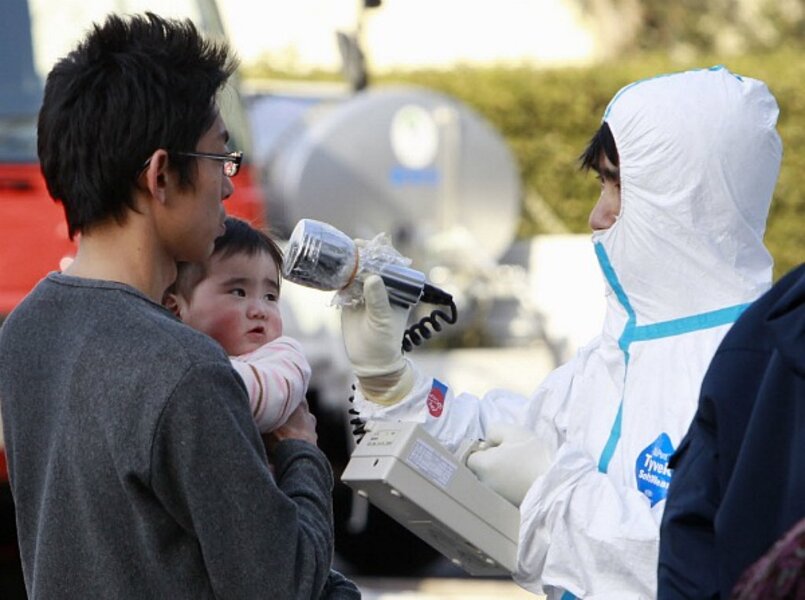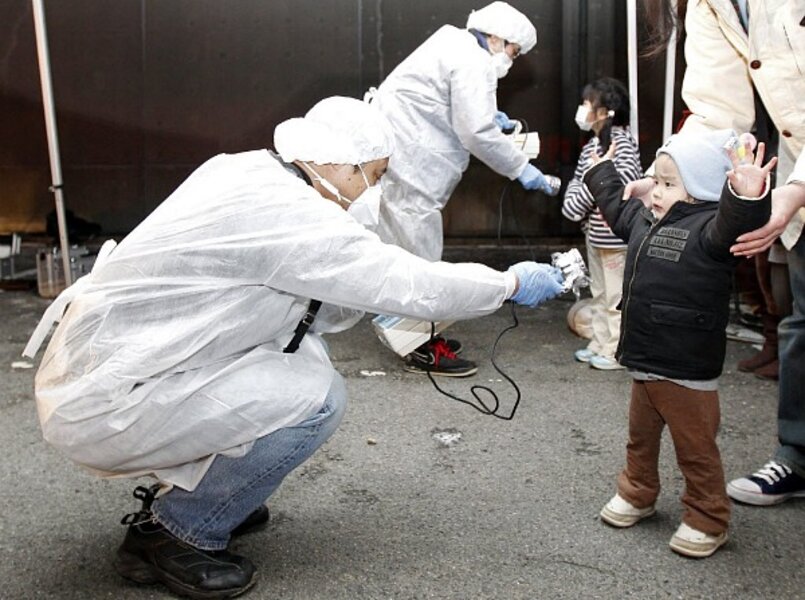New nuclear plants may have withstood the Japan earthquake
The latest nuclear reactor designs could help avoid the overheating and explosions that have occurred at the Fukushima Daiichi nuclear plant in Japan following the powerful earthquake and tsunami that struck on Friday. Newer reactor designs propose the use of passive cooling systems that would not fail after a power outage, as happened in Japan, as well as other novel approaches to managing reactor heat.
As of Monday, power plant operators in Japan continued to struggle to cool reactors at the Daiichi plant. Two explosions had occurred in parts of the plant but the reactor core and primary containment structures were apparently not damaged. (There have been reports of an third "explosive sound.") So far relatively little radiation has been released (although there have been transient, and dangerous, spikes of radiation). Some experts say that a complete meltdown, in which large amounts of radioactive material would be released into the environment, is unlikely, and that within a few days, the reactor core will have cooled to the point that it will be easier to manage.
The Daiichi power plant shut down automatically after the 9.0-magnitude earthquake hit (recently updated from 8.9), but the cores of its four reactors still require cooling to prevent a meltdown. The cooling is normally provided by water that is pumped into the core using electricity. The earthquake cut off electricity needed to drive water pumps, and then backup diesel generators failed, likely as the result of the tsunami triggered by the earthquake. Although details are difficult to confirm, it appears that another cooling system that uses batteries and steam-driven pumps also failed, and a heat exchange system that removes heat from the water coolant around the reactor seemed to be damaged, says Andrew Kadak, a research affiliate at MIT.
RELATED: How Tokyo had an 80-second head start
Plant operators used firehoses to pump seawater into the Daiichi reactor to cool it down , says Michael Podowski, a visiting professor of nuclear science and engineering at MIT, but without the cooling system in place, there is no way to remove heat from that water via the heat exchanger. As a result, the water heats until it turns to steam, which causes pressure to build up within the containment building.
A key next step is to repair or replace the heat exchanger system to provide a way to remove heat from the seawater. This will eliminate the need to vent steam, which contains radioactive materials, into the atmosphere.
The reactors at the nuclear plant, built in the early 1970s, rely on active cooling systems that require electricity. Newer plant designs would lessen or eliminate the need for active cooling, making use of natural convection or a "gravity feed" system to cool reactors in the event of an emergency.
In one design, for example, the relatively new Westinghouse AP1000, water is suspended over the reactor housing. If pressure within the system drops, this allows the water to fall into the reactor area, submerging it in enough water to keep it cool.
ALSO SEE: Japan's nuclear crisis: A timeline of key events
While passive systems could be better in the event of electrical failures, they might not always be the safest systems. Kadak says that in an active system, it's easier to ensure that coolant gets exactly where it needs to be—it's simply pumped to the right location. Designing passive systems, on the other hand, requires complex models of how fluids will behave in a system that could be rendered incorrect if the system is damaged.
Kadak says that even more advanced reactor designs could overcome these issues. Some advanced reactors use molten metals to cool the reactor—the mass of these systems is enough to provide cooling in an emergency, he says, although if the molten metal were displaced by an earthquake, that could be a problem of its own. He's devoted much of his career to another advanced alternative, the "pebble bed reactor," which is designed to make it impossible for the fuel to get hot enough for a meltdown. The tradeoff is that the reactors, which are the same size as conventional ones, produce only about 1/10th as much power.
Kadak says that overall, even today's reactor designs are generally safe. "We shouldn't lose sight of the enormity of the earthquake and flood," he says. "Nuclear power plants are designed for earthquakes and hurricanes, and in some places tsunamis. But these were unbelievably large."
IN PICTURES: Japan's 8.9 earthquake
SOURCE: Technology Review
RELATED: How Japan's Earthquake and Tsunami Warning Systems Work






